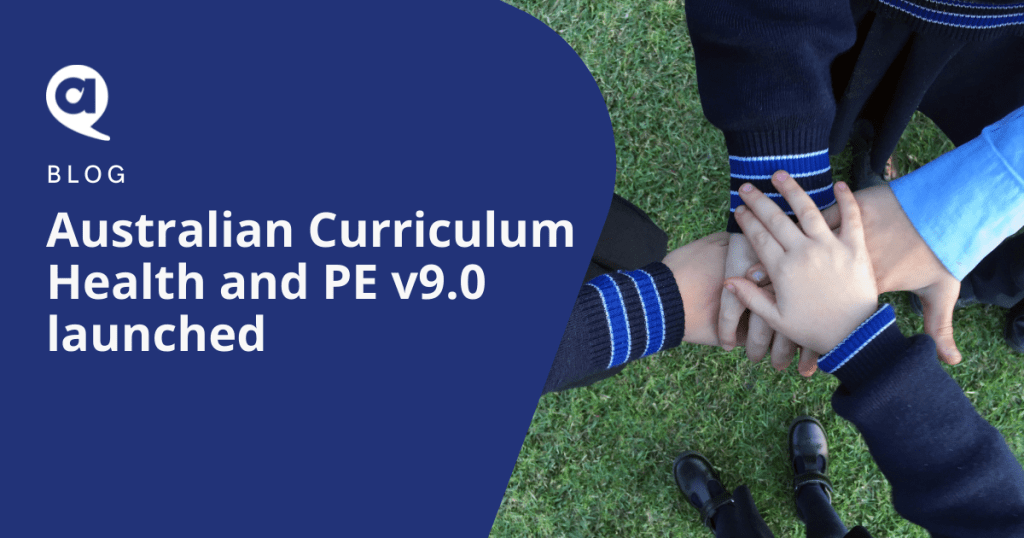
11 May 2022
by Janice Atkin, ACHPER NSW Professional Learning Officer
ACARA has released the updated Australian Curriculum for Health and Physical Education.
Stripped-back and more teachable, Curriculum version 9.0 supports deeper conceptual understanding around key health, movement and physical activity skills and knowledge.
A new website was launched to support the curriculum release. Designed with teachers, it helps you control the way you view the curriculum and makes work easier.
The key changes to the revised curriculum include strengthening:
- the explicit teaching of consent and respectful relationships from F–10 in age-appropriate ways. This includes content that addresses the role of gender, power, coercion and disrespect in abusive or violent relationships
- names and content descriptions in the movement and physical activity strand to emphasise the importance of students learning while moving.
- content that supports learning about physical activity options, with a focus on activity in natural and outdoor settings.
What does the new Australian curriculum mean for NSW?
In conversations I have had with NSW teachers about the Australian Curriculum Review in the past months, I have noticed a lot of apathy about engaging with the national curriculum. The reason given by many is that NSW has their own PDHPE syllabus, so the Australian Curriculum isn’t relevant in NSW. However, this is not the case.
NESA syllabuses include Australian Curriculum standards and content that clarifies the scope, breadth and depth of learning. The Australian Curriculum achievement standards underpin the syllabus outcomes and the Stage statements in the current K-10 PDHPE Syllabus.
NSW curriculum reform process
With the release of the new Australian Curriculum aligning with work NESA is undertaking to review and re-design PDHPE learning area syllabuses, teachers can have an insight into the new Australian Curriculum content that will likely be included in the revised K-10 PDHPE syllabus currently being developed.
Some of the new content in the Australian Curriculum that is expected to be included in the new NESA syllabus is around mandatory consent and respectful relationships education. The new content from the Australian Curriculum is included below:
The NESA curriculum reform website provides more detail on the syllabus development process.
NSW curriculum: early signs
The first syllabuses released as part of the NESA reform process are K-2 English and Mathematics. The structural levels within the syllabus have been reduced significantly, indicating the direction for our learning area syllabus
The new NESA digital curriculum website makes navigating the syllabus much easier. Key sections of the syllabus, assessment, teaching and learning support and examples of content delivery are all readily available. Content is aligned directly to each outcome and written in a direct, user-friendly way.
Australian Curriculum: Take a deeper dive
The release of the new national curriculum gives you an opportunity to get ahead of the game, and see the direction that the NSW syllabus review might take. So, take a closer look at the new national Health and Physical Education curriculum, and download the following materials:
- Understand the learning area – provides the aims, rationale, structure, key considerations and key connections for the learning area.
- Curriculum content F–6 – provides the level overview, achievement standards, content descriptions and elaborations for each learning area or subject across Foundation to Year 6.
- Curriculum content 7–10 – provides the level overview, achievement standards, content descriptions and elaborations for each learning area or subject across Years 7 to 10.
- Scope and sequence – provides the achievement standards and content descriptions for the learning area or subject across F–10.
- Glossary – provides definitions for terms used in the learning area or subject.
- Comparative information – shows the differences between Version 8.4 and Version 9.0 achievement standards and content descriptions
- Health and Physical Education: Support resource – focus areas.



